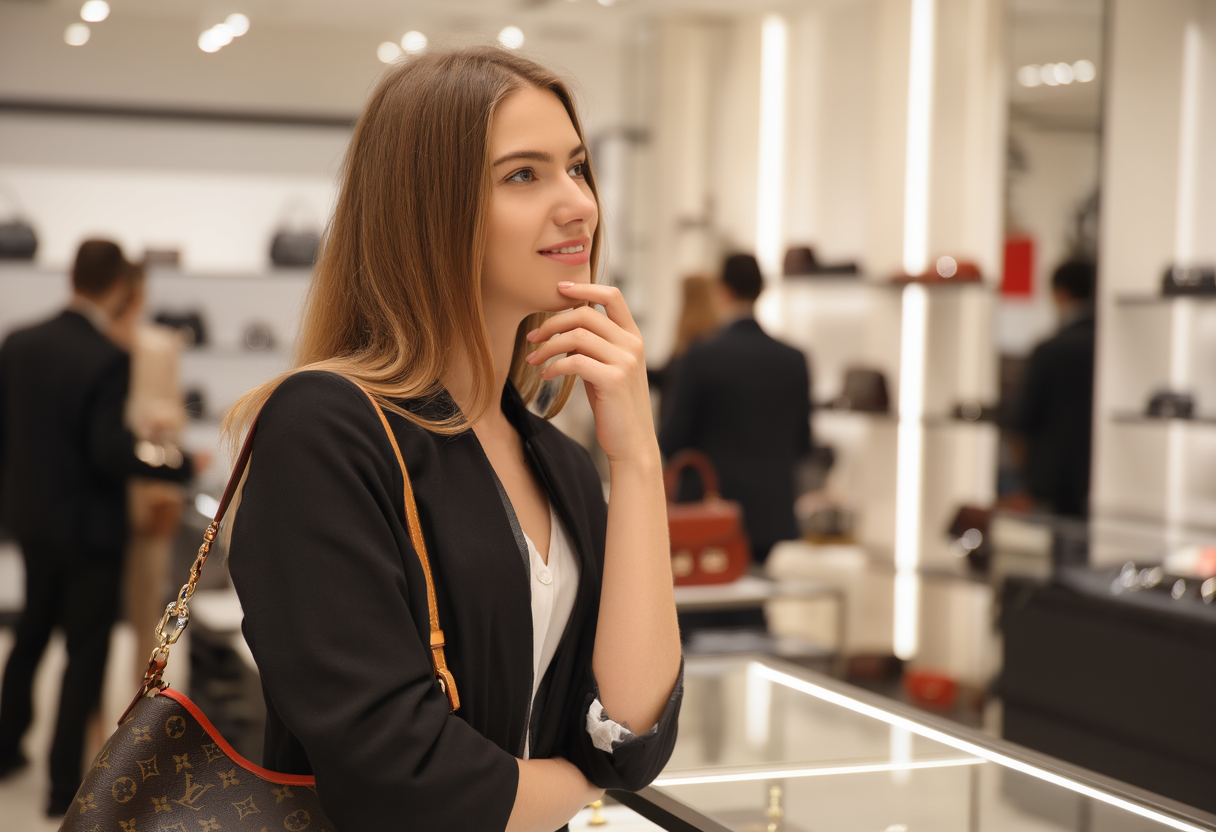Second-hand Designer Bags: Fashion Revival or Budget Necessity?
The debate around second-hand designer bags highlights their role as either a fashion revival or a budget necessity. This article investigates the implications of buying pre-owned designer items in today's economy, addressing themes of consumer culture and financial savvy. As sustainability takes center stage, understanding the motivations for choosing second-hand bags reveals a nuanced dimension of luxury fashion. Explore how this trend shapes personal identity, challenges retail norms, and encourages a more thoughtful approach to consumption.
Examining the Trend of Second-hand Designer Bags
The rise of second-hand designer bags is not merely a passing trend; it’s a significant cultural shift that invites examination. Today, consumers are becoming increasingly aware of the implications of their purchasing decisions, leading many to seek out pre-owned luxury items. Second-hand designer bags offer a unique blend of style and affordability, often appealing to those who wish to maintain a fashionable appearance without breaking the bank. More importantly, this shift reflects a transformative change within the fashion industry—a response to increasing awareness regarding sustainable practices and ethical consumption. As more high-profile personalities advocate for thrift shopping, second-hand designer bags are gaining credibility and appeal across demographics, transcending traditional notions of wealth.
The Financial Perspective on Second-hand Designer Bags
From a financial perspective, the choice of second-hand designer bags brings substantial advantages. Many consumers are now recognizing the practical benefits of purchasing second-hand as a budget-friendly option. High-end designer bags can often retain significant value, meaning that savvy shoppers can buy items that may have originally been out of reach. This presents an opportunity for consumers to engage with luxury without the associated financial strain. For many, this financial savvy has become a part of their identity—embracing the notion that luxury can be accessible without compromising style. Pairing affordability with the allure of luxury, second-hand designer bags provide a pathway to a more equitable fashion landscape.
Consumer Behavior and Attitudes Towards Second-hand Designer Bags
Understanding consumer behavior regarding second-hand designer bags reveals interesting insights. Many individuals who choose second-hand do so not just for financial reasons, but for the thrill of the hunt—finding unique pieces that tell a story and possess character. This exploration of personal style nurtures a mindset that values individuality over brand loyalty. As consumers share their second-hand finds on social media, a community is formed, supporting an ethos that celebrates unique fashion choices and sustainability. This collective consciousness around second-hand designer bags fosters deeper connections between consumers and the items they choose to purchase, transcending traditional relationships between buyer and product.
Second-hand Designer Bags and Sustainability
The environmental impact of fashion is becoming harder to ignore. As sustainability becomes a mainstream conversation, the choice to buy second-hand designer bags speaks volumes about one’s values and priorities. Each second-hand designer bag sold represents a small victory against the waste generated by fast fashion. In this context, purchasing pre-owned items is a part of a broader commitment to sustainable living—a practice that aligns personal style with ethical consumption. Furthermore, this trend signifies a potential shift in the retail landscape, where the demand for new products may become less appealing in light of the benefits that accompany pre-owned luxury goods.
Shaping Identity Through Second-hand Designer Bags
Choosing second-hand designer bags can also be a statement of identity. No longer do luxury brands define individuality; instead, it's about how consumers curate their personal style. By opting for pre-owned items, individuals can explore diverse fashion narratives that reflect their unique tastes. The challenge of finding rare or limited-edition pieces adds an element of excitement that new luxury items lack. In addition, this movement underscores the desire for authenticity in a world saturated with mass-produced items. Second-hand designer bags have emerged as a remedy for this — they tell stories and represent personal journeys that resonate more deeply than traditional luxury purchases.
Conclusion: The Future of Second-hand Designer Bags
In conclusion, the landscape of second-hand designer bags is a compelling narrative that entwines fashion revival with economic necessity. As consumers continue to challenge traditional retail norms and embrace sustainable fashion, second-hand designer bags embody the values of today's discerning shopper. With a heightened emphasis on individuality, budget-consciousness, and environmental responsibility, the future is bright for this evolving market. Ultimately, as more consumers turn toward thoughtful consumption, the role of second-hand designer bags will continue to grow, forging a path to a more sustainable and inclusive fashion industry.
